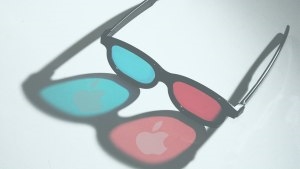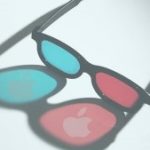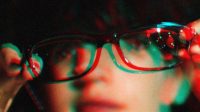Apple’s AR Glasses Are No Longer An “If” But A “When”
Research firm IDC has released a forecast saying augmented and virtual reality gear and apps will surge in the next few years. That’s the latest evidence that the smartphone won’t be the center of our computing universe forever–in fact, not even for very much longer. Our focus will begin moving from the smartphone to devices fitted to our bodies, including augmented reality (AR) devices.
Smartphones have been important for so long that we often don’t think about how clumsy it can be to handle that slippery square of glass and metal. It’s especially cumbersome in the age of personal assistants and augmented reality, which require close interplay between the tech and our ears and eyes.
For Apple, the Apple Watch was the first evolutionary step away from the smartphone. That device shows us, in quick glances on the wrist, communications and notifications that would normally call our attention back to the smartphone. But instead of reaching for the smartphone, a Watch wearer can either ignore it or send a quick reply from the wrist. The phone can stay in a pocket or purse with the ringer off.
The second major hint came with the AirPods, which put things like the Siri assistant and driving directions in our ear. Again, the phone acts as the base station for the experience, but it can stay out of sight.
AR glasses will be the next major step. Apple already began to set the stage when it unveiled its powerful AR app developer tools in June. Developers have gotten busy creating experiences where digital objects are placed in the real world as seen through the camera and screen of the smartphone.
But Apple design chief Jony Ive surely understands that mainstream users aren’t going to want to hold their smartphone up in front of their face Pokémon Go style. In order to fulfill the vast potential of AR, the experience will have to be hands-free and immersive as only glasses can enable.
Glassed Out
Google saw this coming a long time ago with its ill-fated Google Glass. But the components weren’t quite ready–in fact, they probably still aren’t–which hindered the sleekness of the design and the attractiveness and usefulness of the interface shown in the lenses. In the end, Glass was seen as a science project–something worn by ubergeeks but not regular folks.
Apple will fare better. It can learn from Google’s experience with Glass. And Apple has always been better than Google at understanding the melding of hardware and software design, and matching gadget feature sets to real consumer needs.
Then there’s the important realization that glasses are not just a tech product. Like the smartwatch, they are a tricky hybrid of tech device and fashion accessory. Above Avalon analyst Neil Cybart points out that Apple learned a lot about the fashion world and applying fashion sense to technology since entering the smartwatch market. “Apple Watch has taught Apple much about how to get people to wear personal technology,” Cybart writes in a recent newsletter. The company will need to draw on that experience in a big way for its AR glasses.
Getting The Green Light
Many, many products have been prototyped at Apple but never became an actual product. It’s a very high bar to cross at the company. Still, Cybart lists off a number of things that practically assure Apple’s glasses a place in the product lineup.
Glasses are a good place to tightly integrate and control the hardware and the software (“The sum is greater than the parts,” Cybart says). Apple can apply the manufacturing experience it’s gained from making the Watch and AirPods to building glasses. Apple Stores are natural showrooms for such eyeware, and they’re everywhere. Glasses are a chance to make technology more intimate and personal, as Apple has long stressed.
Cybart makes another point. The holy grail in selling personal tech is creating something that the user doesn’t want to leave home without. Augmented reality glasses, by themselves, might not meet that threshold (at least in the early days), but what if the glasses also sported corrective lenses?
“There aren’t too many gadgets or devices that would be selected over a smartphone in terms of its importance in our lives,” Cybart writes. “However, corrective lenses would certainly be at the top of the list for many people.”
Adding a second layer of (digital) utility to prescription glasses people already wear seems like a smart way to bring AR into the mainstream. How big is that market? The Vision Council of America says approximately 75% of adults use some sort of vision correction, and for about 64% of them, that means eyeglasses.
I don’t claim to know when Apple will bring the glasses to market. I hear differing opinions from the analysts and supply chain people I know. It depends on a lot of things, including the availability of potent-but-tiny processors and a battery that’s big enough to supply adequate power, but small enough not to ruin the hardware design.
What I am saying is that the promise of AR is just too big for Apple to let pass forever.
(45)





